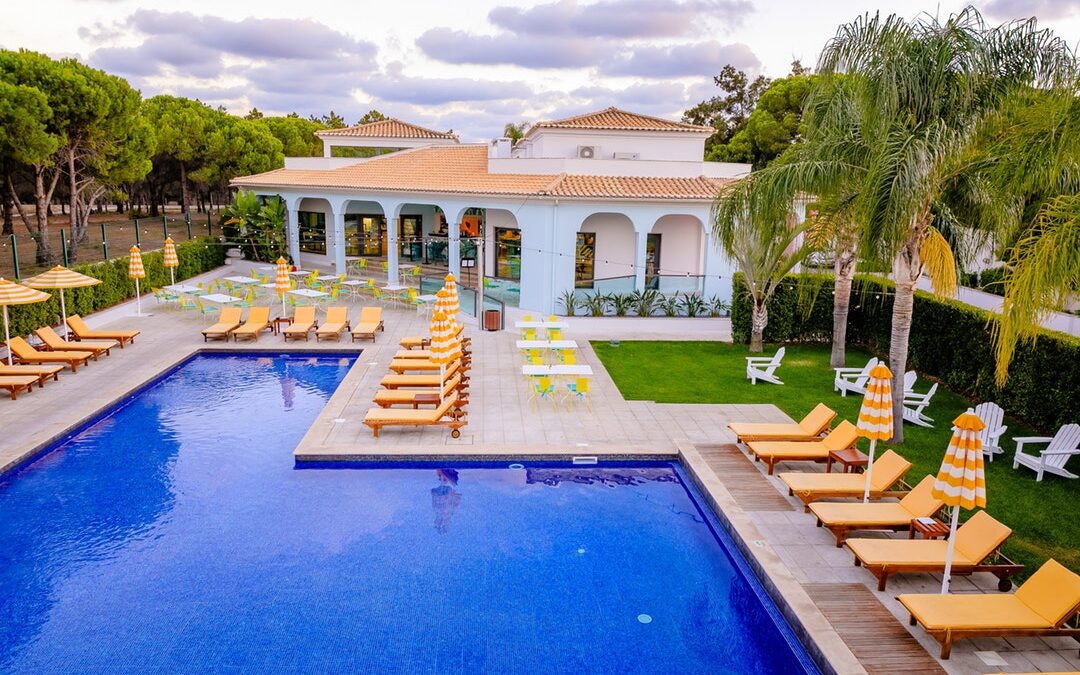Are you tired of looking out the window at your boring backyard? Do you wish you could look outside and see your own personal inground swimming pool oasis instead?
The good news is there are so many types of inground pools out there today that you’ll have no trouble finding the perfect one for you within your budget.
Before you know it, you’ll have one of the best inground pools on the block, making all your neighbors jealous.
So keep reading our guide to find out all about the types of inground pools you can choose from right from the comfort of your home!
Inground Swimming Pool
If you want a step up from the typical above-ground pool, then an inground pool is your solution—a permanent solution to your backyard oasis!
Building a swimming pool isn’t just about digging a hole in the ground and pouring in concrete and water anymore. Nowadays, several design elements go into an inground pool, and many more options to choose from.
An inground swimming pool can give you many things, from a water slide and waterfalls to a diving board. They can come in a free-form shape, round, square, or almost anything you want.
Remember, it’s 2021, and you have swimming pool options, so let’s look at the main inground swimming pool types you will find.
Concrete Pools
Concrete pools have a long history. They date as far back as 2600 B.C.E., and the first concrete pools were for religious ceremonies. Later, concrete pools appeared in Rome and Greece for sports and education.
Concrete pools are typically made from a particular type of concrete called Gunite. Gunite is a durable sprayed concrete used for tunnels, structures underground, and swimming pools.
Concrete pools can also use shotcrete and cast pools. These are concrete mixtures with different water and application methods.
Concrete pools are fantastic. After all, they are durable and versatile because they are molded to practically any shape you could ever want. You can also have your choice of a variety of different finishes and colors.
Concrete pools cost between $45,000 and $85,000 with maintenance costs between $3,000 and $7000 every ten years.
A drawback to concrete pools can be their installation. You need skilled professionals that know the technique of using Gunite. Otherwise, you’ll have problems with your installation for years to come.
Also, the construction of concrete pools takes a lot longer than the other types, so you could easily be looking at higher construction costs in the end.
Fiberglass Pools
Next are fiberglass inground pools. Fiberglass is a strong but lightweight material woven together and hardened with a polyester resin.
Fiberglass pools also have a weather-resistant finish to protect against cracking and damage.
Like the concrete pools, you can get fiberglass pools in many shapes, colors, and tiles. Fiberglass pools also come with options for built-in water features like waterfalls, streams, and LED lightings, and vanishing edges.
You can even go a step further and get ledges, steps, ladders, tanning, and seating areas built into your fiberglass pool design.
Depending on your budget, you can even get an automatic cleaning system installed. Fiberglass pools also tend to have fewer problems with algae, don’t require much maintenance, and need fewer chemicals.
Fiberglass pools are fitted and installed in your backyard all in one piece, instead of before it arrives.
Fiberglass pools are installed quickly, with complete installation taking seven days or less in most cases.
You’ll pay about $10,000 less for a basic fiberglass pool than a concrete one, but once you start adding in the extras, it can quickly become more expensive. Fiberglass pools usually cost anywhere between $45,000 to $85,000 once it’s all said and done.
Vinyl Liner Pools
Vinyl liner pools have been around for more than 50 years and still stand tall in today’s market.
Vinyl liner inground pools have a piece of vinyl placed around the wall panels and braces of the pool’s structure. A concrete or sand floor goes underneath the liner, and the panels include galvanized steel so they don’t break easily.
Vinyl liner pools are easy to put together, and you can get them in ready to assemble kits. You can hire a professional, but if you’re feeling like taking on a DIY project, you can easily install a vinyl pool on your own.
Vinyl liners pools are durable, and repairing them or replacing parts is easy and inexpensive. They’re low maintenance, and algae have a tough time growing on vinyl, but you still have to check for tears and leaks before they get out of control.
Remember that you can’t drain the water from a vinyl pool, as that’s what holds the liner in place.
If you’re looking for an inground pool on a budget, then Vinyl could be the winner for you as they cost over $10,000 less than concrete or fiberglass.
Natural Swimming Pools
Natural inground swimming pools reached their popularity in Europe in the 1980s and have made their way to Australia and the United States. Nature swimming pools are becoming increasingly popular due to their sustainability.
Natural pools are as original as they are adaptable and have small pools, ponds, rocks, and irregularly shaped waterfalls.
What makes a natural swimming pool natural is that they are filtered organically instead of by chemicals. Another pool called a regeneration zone is built close by. This pool allows the water to enter a gravel or plant filter that cleans the water, much like the process in nature.
The cost for natural swimming pools varies, but you’ll pay more upfront for less maintenance and expenses down the road.
Types of Inground Pools
Now that you know all about the types of inground pools, it’s time to contact the professionals at Sahara Construction & Custom Pools.
Sahara Construction & Custom Pools offers free consultations and financing options.
So make sure you contact us today so you can swim in the pool of your dreams tomorrow.




